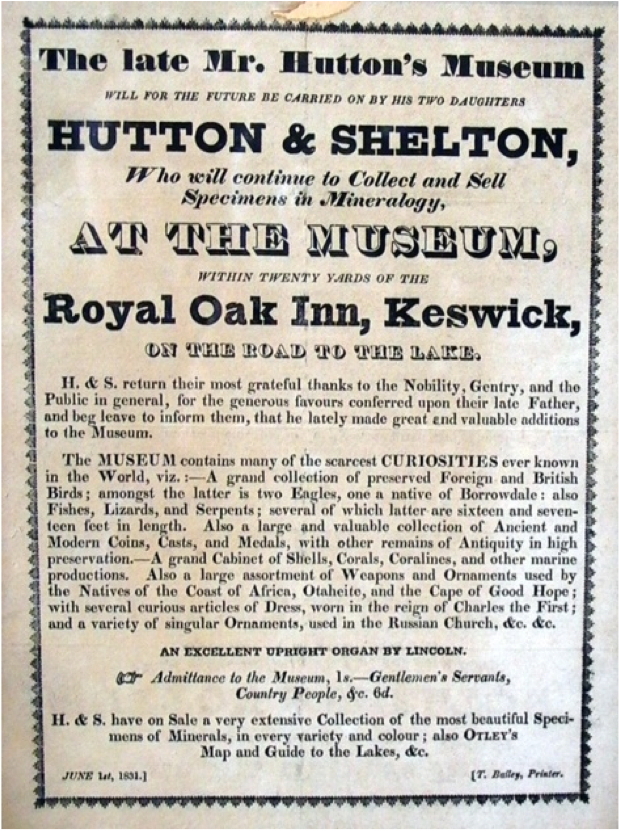The Hutton Museum
Thomas Hutton and associates established their museum in Keswick in 1775-6, in a prime location between The Royal Oak Inn and Keswick Lake. The museum managed to remain in business until around 1840, despite fierce competition with the rival Crosthwaite museum.
Hutton’s museum contained a natural history collection, as well as local minerals and botanical specimens. However, in her 1810 journal, the governess Miss Weeton describes Hutton’s establishment as “second rate”; it appears that Crosthwaite’s East India Company and sailing contacts may have meant he had better access to more spectacular objects.

In fact, it is claimed by some that due to the discrepancy in the standard of their respective curiosities, Hutton felt obliged to organise the theft of some shark jaws bound for Crosthwaite’s museum and then proudly display them in his own!
Hutton’s museum did, however, possess certain objects of notable importance; it displayed, for example, the model slave ship which William Wilberforce had famously displayed in the House of Commons which illustrated how the slaves were forced to lie, packed tightly into the ship.
As well as natural history taxidermy, the museum also had a living exhibit, an eagle, which the visiting Reverend Newton of Wrath described as being so impressive and strong that “his keeper was afraid to approach him without a stick”.
Advertisement by the children of the late Mr Hutton for the continuation of The Hutton Museum, photographed with the kind permission of The Keswick Museum.
